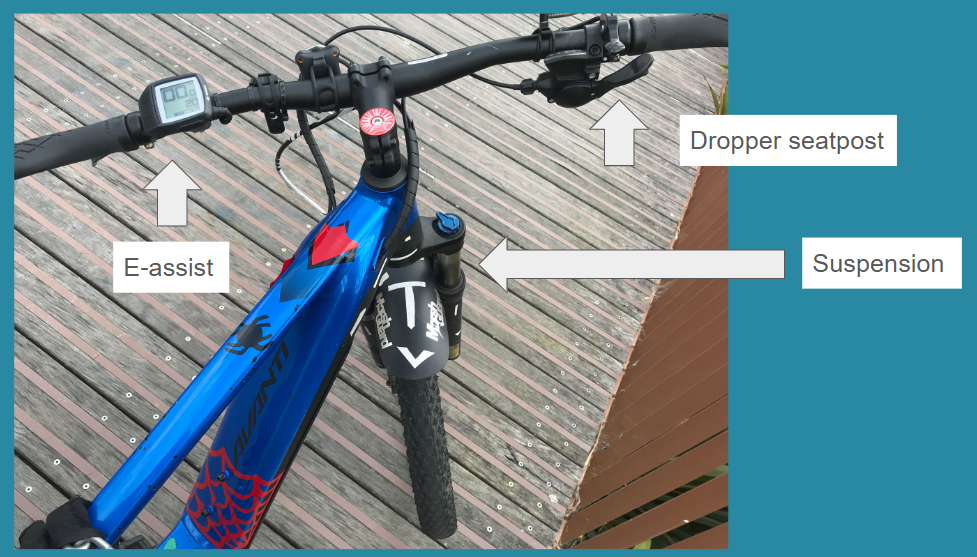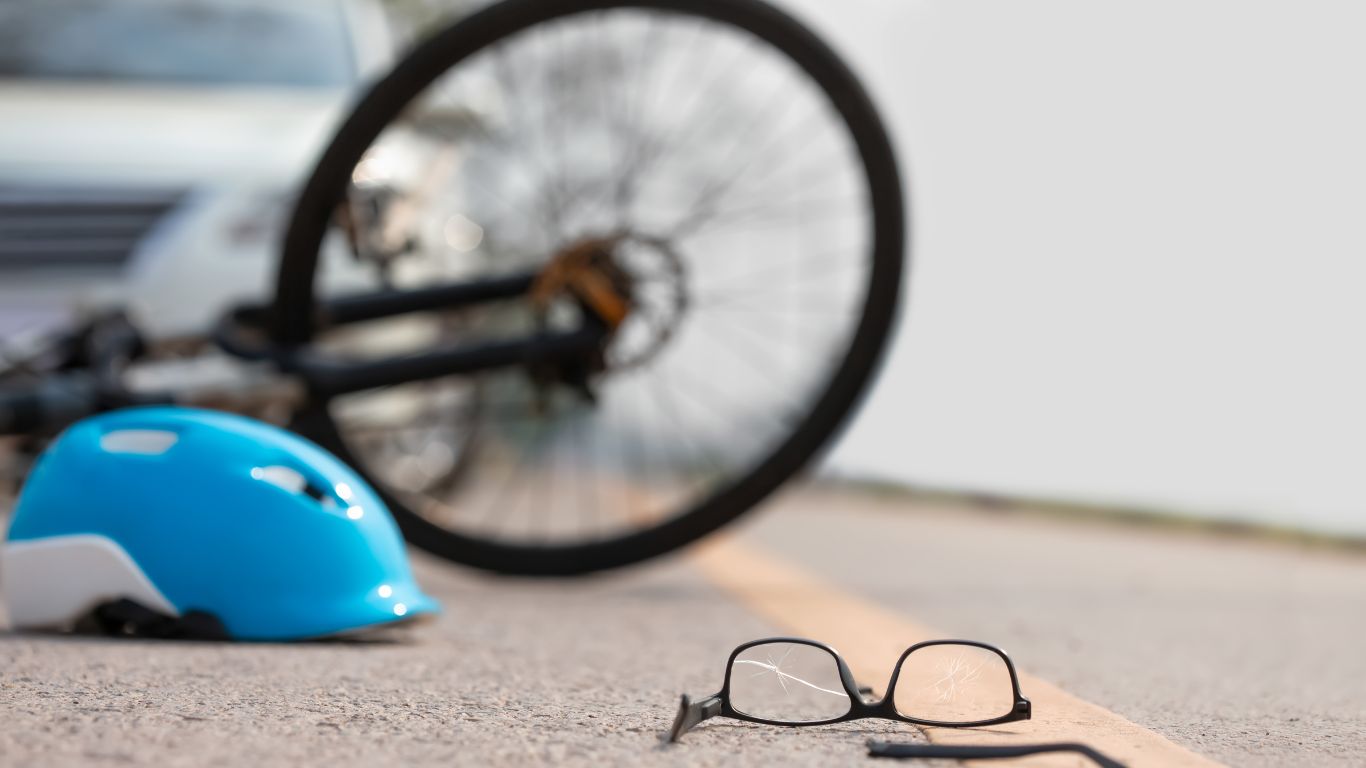College Hill is a key route for people on bikes – but a dangerous one, with no prospect of improvement any time soon. Luckily, there are two quick consultations where we can call for change. Re-read our call for action on the first, and read on for the second…
Here’s AT’s proposal for a new crossing and slow speed zone on College Hill
Feedback closes Thursday 14 June
Use the hot pink button to add your voice!
Here’s what we say
- We like the proposal, but it needs changes
- Please make the crossing more visible, with flashing surface lights or similar.
- Please remove the side islands – and please add protected bike lanes!
- Make the school speed zone limit 30kph… and all day.
- (And, where the form asks for ‘other information’, feel free to tell your own story about the need for safer biking here)
And here’s why
For reasons that are clear to people on the inside, impenetrable to everyone on the outside, and frustrating to both, there is no protected path for people on bikes planned on College Hill for several years at the absolute minimum. Not even with the new Victoria St cycleway (coming in a year or two) leading into the city from the bottom of College Hill, and the almost completed Franklin Rd project.
The short version: there is still not enough money or political will to deliver all the transformative projects our city really needs to free up our streets by getting people safely onto their bikes and out walking. Even in the new climate, where AT acknowledges it urgently needs to lift its safety standards – and in which e-bikes are rapidly making hills beside the point – fixing a glaring gap like this to make the street network safer and more efficient hasn’t been seen as an urgent strategic priority… until now.
Now, we expect AT to take every opportunity to make every safety improvement it possibly can. And here’s one.
Halfway up College Hill is a tiny pedestrian refuge in the middle of four lanes of traffic. This is the woefully insufficient midpoint for a major pedestrian desire line – creating issues for hundreds of school children, the elderly – e.g. those visiting somebody at Mercy Hospice – and for able-bodied adults too.
Auckland Transport wants to install a signalised crossing and a slower school speed zone here (click here to see the project page for the St Mary’s Bay pedestrian improvements). Both are good moves, but we can see how to make them better…
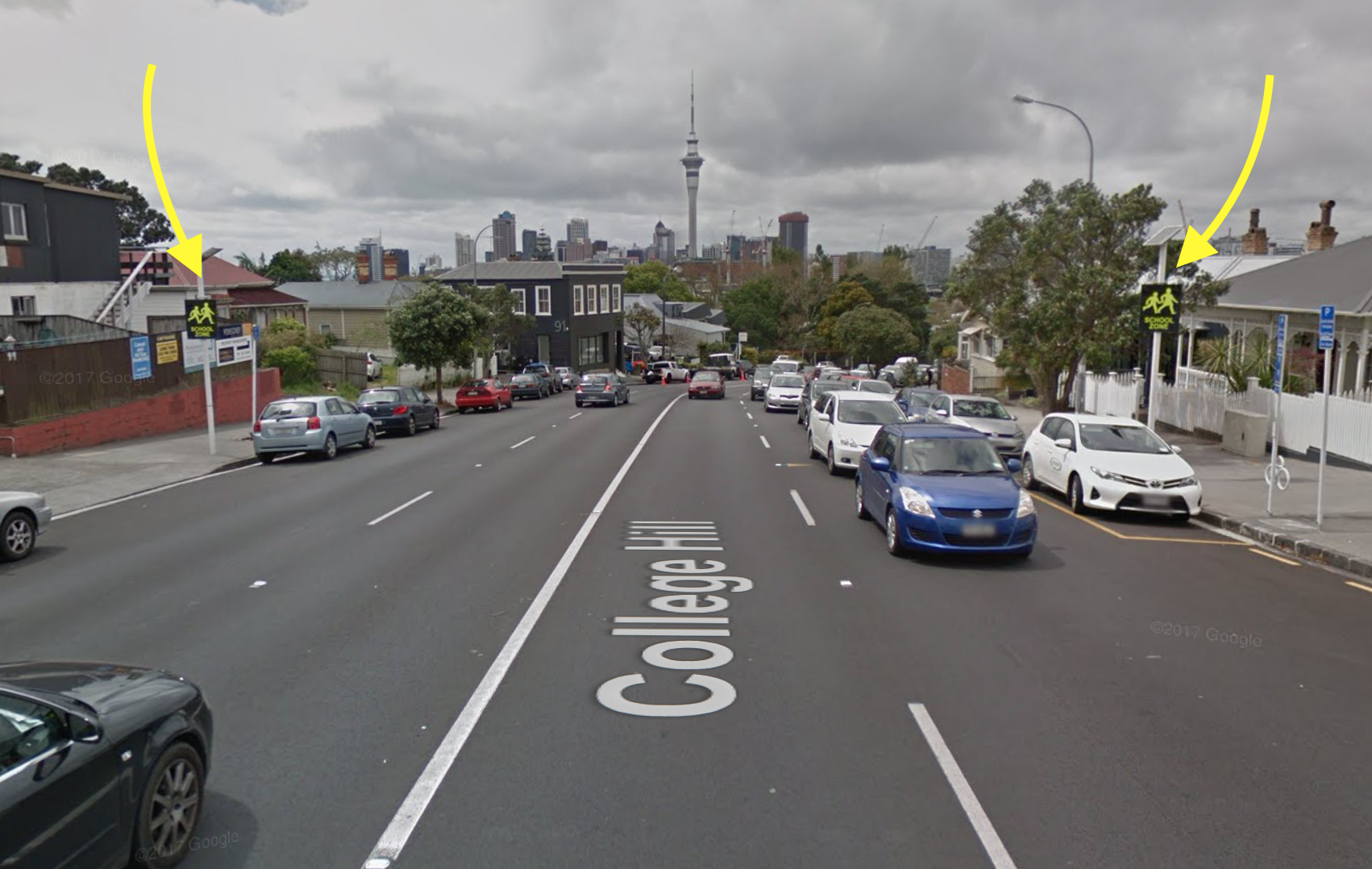
Here’s our thinking
The proposed crossing spans four live traffic lanes on a hill with a known speeding problem. How long until a driver accidentally or willingly ignores the red while a pedestrian is crossing? For that reason, we think the crossing needs to be more conspicuous. We’d love it to be on a raised table, but on one of our busiest bus routes, that’s unlikely.
That’s why we say: at the very least, add warning flashers or similar to this crossing when active.
The proposed design also keeps the side islands, which create a potentially deadly pinch point for people on bikes, by forcing riders back towards traffic – even though the plan removes parking for a long stretch either side of the crossing. The bump-outs exist to make the current situation feel safer, by shorting the distance pedestrians need to dash to the central refuge. With the traffic signals, the side islands aren’t required anymore.
That’s why we say: remove the pinch-point side islands – and add bike lanes through this section. This way, AT can transform a danger spot into a first improvement for bikes on this hill.

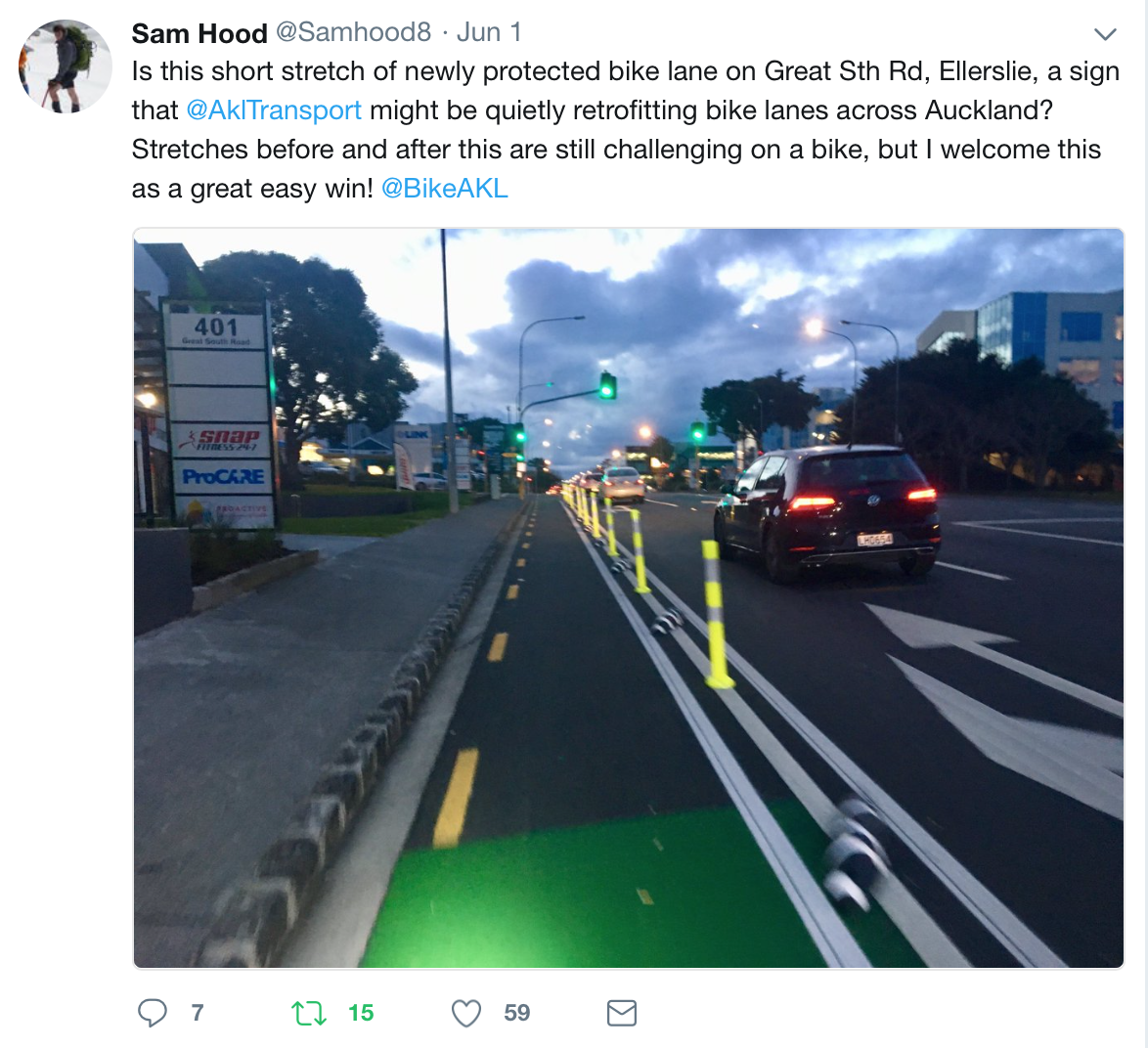
As for the 40 kph speed zone (see area map here), Bike Auckland gave feedback on this some months ago, when it was discussed with transport stakeholders. Then and now, we said two things:
- 40 kph school zones are not best practice. At 40 kph, the chance of injuries and fatalities for pedestrians and people on bikes is still massively higher than at 30 kph, as the graph below tells us. 40 kph is a very poor compromise – it’s a step towards safety, without actually ensuring safety. If we are SERIOUS about improving our road toll, we need to be serious about reducing speed to the point where it makes a tangible difference.
That’s why we say: install a 30 kph school speed zone here.
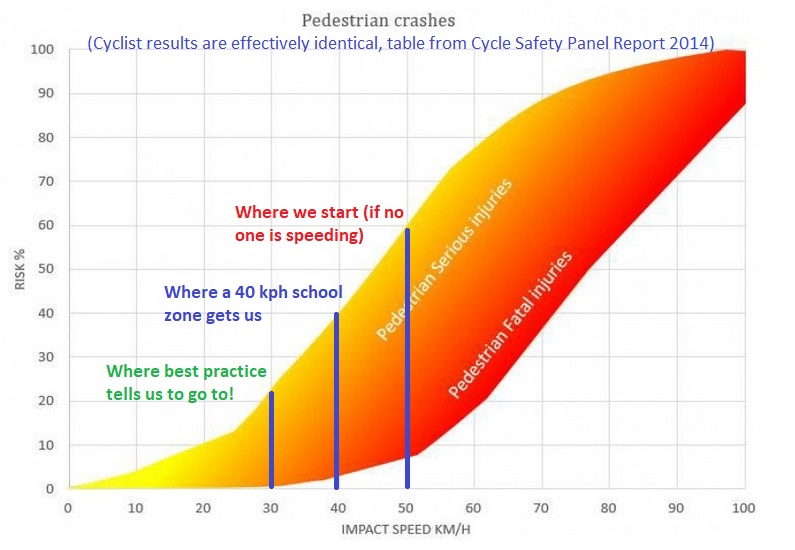
At peak times, people often won’t be able to drive fast through here anyway. And even when traffic is moving freely, those 2 extra seconds are not worth risking the lives of school children and residents and visitors of all ages.
So here’s the other thing: as proposed by AT, the speed zone would be ‘variable’ – it would only apply for 35 minutes in the morning and 20 minutes (!) in the afternoon. Run, children, run! Again, this is not best practice. Proper reduced speed zones operate 24/7, so drivers can get used to them, with physical infrastructure that ensures people drive to this speed consistently, not just when – or if! – they check the signs.
And that’s why we say: apply the slow speed zone all day.

The counter-argument (and we can already picture it in the consultation summary, because we’ve heard it before) is that a 24/7 30kph zone would be ‘unrealistic’… because people wouldn’t obey it.
Really? Well, if that’s true, we urgently need to get serious about enforcing speed limits and designing the shape of our roads to ensure people drive to a safe speed on city streets. The most recent report on speeds by the OECD’s International Transport Forum states clearly: “The design of the road system and the speed limits set for it must consider the forces the human body can tolerate and survive. Working towards a Safe System, reasonable speed limits are 30 km/h in built up areas where there is a mix of vulnerable road users and motor vehicle traffic.”
And remember the rationale for this project, in AT’s own words:
Why the changes are needed
School children from St Mary’s College have been observed crossing here in large numbers and there are times where there are too many to wait safely within the existing pedestrian refuge. A signalised crossing will greatly improve the safety of all pedestrians, especially school children, crossing here.
The safety of students from St Mary’s College crossing College Hill Road has been an ongoing concern for the last five years. We previously implemented active warning signs instead of a school zone. However, the safety concerns still exist and the speeds have not decreased, even with the active warning signs. We are now proposing to upgrade these active warning signs to variable speed limit signs.
This is in the heart of New Zealand’s biggest city. Speeds have not decreased at peak school times, even with active warning signs! And recall that, while speed has a horrifically outsize effect on those outside vehicles, most of the crashes on College Hill involve (and harm) people in vehicles. When everyone goes slower, everyone benefits.
If AT is going to be serious about prioritising safety, it must start as it means to go on. Make a 24/7 commitment to slower speeds here, to ‘greatly improve the safety of all pedestrians, especially school children, crossing here’ – at all times.
This would also be in line with the Auckland Plan, adopted Tuesday 5 June, which says:
Efforts to achieve a safer transport network must introduce appropriate speed limits in high?risk locations, particularly residential streets, rural roads and areas with high numbers of pedestrians and cyclists.
Ready to add your voice on this one now? Click the pink button and let fly – by Thursday 14 June!
Quick guidelines for feedback
- We like the proposal, but it needs changes
- Please make the crossing more visible, with flashing surface lights or similar.
- Please remove the side islands – and please add protected bike lanes!
- Make the school speed zone limit 30kph… and all day.
- (And, where the form asks for ‘other information’, feel free to tell your own story about the need for safer biking here)

